French Open Betting Offers 2024
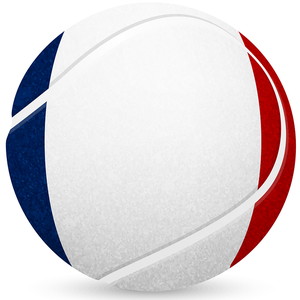 The second of the four major tennis open tournaments returns in 2024. The grand slam event is held at Roland Garros stadium, Paris, and is named after the French aviator of the same name. The French Open is the premier clay court event of the year and being the slowest of all tennis surfaces is regarded as the physically toughest Tennis major to win.
The second of the four major tennis open tournaments returns in 2024. The grand slam event is held at Roland Garros stadium, Paris, and is named after the French aviator of the same name. The French Open is the premier clay court event of the year and being the slowest of all tennis surfaces is regarded as the physically toughest Tennis major to win.
Many great players of the game have struggled to add this major to their list, even Novak Djokovic won only his third French Open in 2023, yet has reached the final 7 times. Any great player that wants to complete the Grand Slam must first learn how play the clay game.
This year the prize fund for the men and women singles champion is expected to approach €2,300,000, from an overall pot of €49,600,000, this means the 128th edition of the tournament is sure to be a cracker. On this page you can find promotions for new and existing punters, including free bets, money back, loyalty offers and more. Further down also find out about the schedule, history, format and more.
French Open Betting Offers for 2024
This event has not started yet, please check back nearer the time. For other offers see our main loyalty page.
Roland Garros French Open Schedule 2024
| Date | Day | Round / Match |
|---|---|---|
| 26th May | Sunday | First Round |
| 27th May | Monday | First Round |
| 28th May | Tuesday | First Round |
| 29th May | Wednesday | Second Round |
| 30th May | Thursday | Second Round |
| 31st May | Friday | Third Round |
| 1st June | Saturday | Third Round |
| 2nd June | Sunday | Fourth Round |
| 3rd June | Monday | Fourth Round |
| 4th June | Tuesday | Quarter Finals |
| 5th June | Wednesday | Quarter Finals |
| 6th June | Thursday | Semi Finals |
| 7th June | Friday | Semi Finals |
| 8th June | Saturday | Ladies Final |
| 9th June | Sunday | Men’s Final |
French Open Format
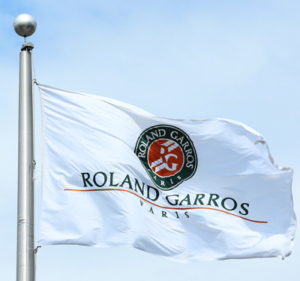 The French Open follows the same format as all other majors with a simple knockout structure. The tournament proper starts at the first round with 128 players for both the men’s and women’s draw. Of the 128 players 32 are seeded based on their ATP/WTA rankings coupled with previous clay court results and previous results at Roland Garros.
The French Open follows the same format as all other majors with a simple knockout structure. The tournament proper starts at the first round with 128 players for both the men’s and women’s draw. Of the 128 players 32 are seeded based on their ATP/WTA rankings coupled with previous clay court results and previous results at Roland Garros.
The remaining places are made up from invites generally given to the rest of the players in the top 100 rankings. Other lower ranked players can also be invited by a panel of officials and previous players, these are known as wildcards and there are 16 available for both the men’s and women’s draw. 32 places are reserved for players that enter into the qualification rounds, qualification rounds take place directly before the start of the tournament.
The 32 seeded players are kept apart until at least round 3 (last 32) based on how they are entered into the draw. This makes it more likely that the world’s top players will make it through to the final rounds. The remaining players enter the draw randomly.
Statistics & Previous Winners
| Statistic | Player | Country | Number | Year(s) |
|---|---|---|---|---|
| Men’s Titles | Rafael Nadal | Spain | 14 | 2005-08, 2010-14, 2017-20, 2022 |
| Men’s Consecutive Titles | Rafael Nadal | Spain | 5 | 2010-14 |
| Women’s Titles | Chris Evert | USA | 7 | 1974-75, 1979-80, 983, 1985-86 |
| Women’s Consecutive Titles | Jeanne Matthey / Suzanne Lenglen | France | 4 | 1909-12 / 1920-23 |
| Men’s Doubles Titles | Max Decugis | France | 13 | 1902-09, 1911-14, 1920 |
| Men’s Doubles Consecutive Titles | Maurice Germot | France | 10 | 1906-14, 1920* |
| Women’s Doubles Titles | Martina Navratilova | Czech | 7 | 1975, 1982, 1984-88 |
| Women’s Doubles Consecutive Titles | Martina Navratilova | Czech | 5 | 1984-88 |
| Mixed Doubles Titles | Max Decugis | France | 7 | 1904-06, 1908-09, 1914, 1920 |
| Men’s Youngest Winner | Michael Chang | USA | 17yrs 3m | 1989 |
| Women’s Youngest Winner | Monica Seles | Yugoslavia | 16yrs 6m | 1990 |
| Men’s Oldest Winner | Rafael Nadal | Spain | 36yrs 2d | 2022 |
| Women’s Oldest Winner | Zsuzsa Körmöczy | Hungary | 33yrs 10m | 1958 |
| Last Men’s Winner | Novak Djokovic | Serbia | – | 2023 |
| Last Women’s Winner | Iga Świątek | Poland | – | 2023 |
| Last Men’s Doubles Winner | Ivan Dodig / Austin Krajicek | Croatia / USA | – | 2023 |
| Last Women’s Doubles Winner | Hsieh Su-wei / Wang Xinyu | Taipei / China | – | 2023 |
| Last Mixed Doubles Winner | Miyu Kato / Tim Pütz | Japan / Germany | – | 2023 |
* Not played 1915-1920 due to World War I
About the French Open
Eugene Adrien Roland Georges Garros
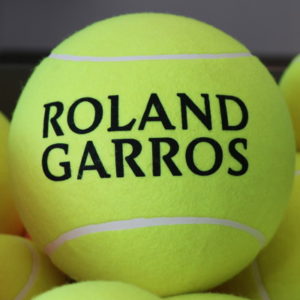 The French Open is named after Eugene Adrien Roland Georges Garros a French pilot born in Paris. He was famous for setting a number of aviation records prior to the first world war including highest altitude flight at the time and the first non-stop flight across the Mediterranean.
The French Open is named after Eugene Adrien Roland Georges Garros a French pilot born in Paris. He was famous for setting a number of aviation records prior to the first world war including highest altitude flight at the time and the first non-stop flight across the Mediterranean.
This isn’t however the reason that many places are named after Roland Garros. It is reported that in 1914 he flew his airplane into a German Zeppelin destroying both the air balloon and his own plane in a blaze of fire. It is regarded as the first air battle that ever took place as well as an astonishing piece of self-sacrifice. In the 1920’s the tennis centre in which he has spent much of his time while studying in Paris was named after him, along with the airport, obviously.
History of the French Open
The French Open began in 1891 and was then called the French Championships and for the first 34 years the tournament was open to French players only or foreign players that were members of the Club Stade Francais. Although French players obviously dominated the tournament in its early years the first ever French Championship was won by Briton H Briggs (his first name is unfortunately unknown). Until 1902 all matches were best of three sets, in 1903 this changed to the modern men’s format of best of 5 sets. Max Decugis was the most successful French player winning 8 titles before WWI. The first women’s tournament was held in 1897, mixed doubles in 1902 and women’s doubles in 1907.
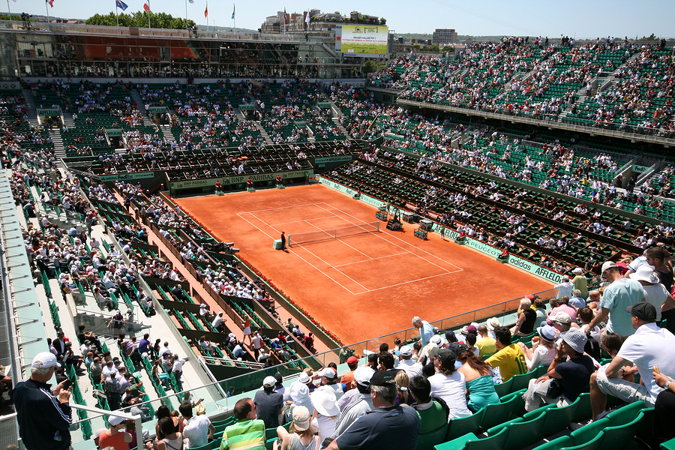
In 1925 the French Championship was opened up to international amateur players. At this time the event alternated between the Stade Francais (Saint-Cloud) and Racing Club de France. Following France success in the Davis Cup in 1927 interest in the event started to increase and the Roland Garros stadium was opened to accommodate the event.
The first foreign player to win the event since Briggs in 1891 was Australia’s Jack Crawford in 1933. No French player would win it again before the outbreak of WWII. The championship did run unofficially during the war but results are not recognised. Whereas the next official event was won by a Frenchman in 1946 (Marcel Bernard) it was not won by a French player again until after the Open era in 1968. From 1946 to 1968 no one player dominated.
Open Era
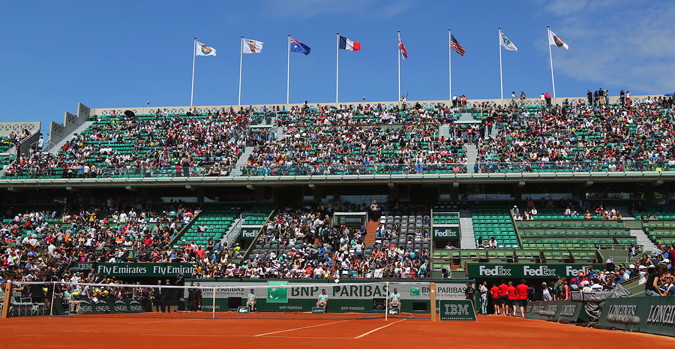
In 1968 the event became an Open event and this meant that professional players could now qualify alongside amateurs. Bjorn Borg, the great Swedish player, was the early dominant force in the men’s game winning 6 titles between 1974 and 1981, Ivan Lendl, a Czech that had finished runner up to Borg in 1981, dominated the mid-80s with 3 titles (1984, 1986, 1987).
American Jim Courier won the event twice (1991, 1992) as did Spaniard Sergi Bruguera (1993, 1994) and Brazilian Gustavo Juerten won 3 times (1997, 2000, 2001), although no one player showed the dominance of the then to come Rafael Nadal.
Rafa became the greatest ever French Open player of the open era winning 9 titles between 2005 and 2014, only the great Roger Federer (2009) offered any real resistance.
Swiss player Stan Wawrinka won in 2015 although many would say this occurred mainly due to Nadal suffering a long term injury. More injury woes for Nadal in 2016 meant it was between Murray and Djokovic yet again, Djokovic won. It was back to normal in 2017, 2018, 2019 and 2020 as Rafa Nadal stepped up yet again, comfortably winning an all time record 10th, 11th, 12th and 13th title.
2020 was notable as the French Open started the latest it ever has, finishing on 11th October – the delay caused by the corona outbreak. This meant the weather was a lot colder making the courts slower, heavier balls were also used. Many thought this might hurt Rafa Nadal but the legend of clay produced yet another masterclass to prove he truly is the greatest player on this court type.
Having on won 1 out of 5 finals it was Djokovic’s year in 2021 as he beat Nadal in a pulsating semi-final and Stefanos Tsitsipas in the final to win his second French Open. In doing so he became the first male player to to win all four Grand Slams twice in the Open era. It was back to normal, however, in 2022 as Nadal saw off Djokovic in the semi-final and went on to win his record 14th title in 3 straight sets against prodigy Casper Ruud. In doing so he became the oldest men’s singles champion at the age of 36 years and 2 days.
Nadal withdrew due to injury in 2023 so who won it? Yeah of course, it was Djokovic claiming his third French Open (how many more would he have without Rafa) and also taking the title for the most Grand Slams by a male player, 23 up to that point.
This year, 2023, actually offers one of the most open events in years. Great Britain’s Fred Perry was the last home player to win the event back in 1935.
Women’s Game
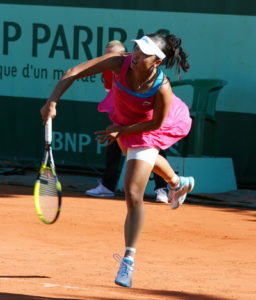 The women’s game, opposite to the men’s, was less competitive in the earlier years of the Open era and more diverse in recent decades. In the early Open era Australia’s Margaret Court (1969, 1970, 1973) won three before the record holder American Chris Evert won seven titles up to the mid-80s (1974, 1975, 1979, 1980, 1983, 1985 and 1986).
The women’s game, opposite to the men’s, was less competitive in the earlier years of the Open era and more diverse in recent decades. In the early Open era Australia’s Margaret Court (1969, 1970, 1973) won three before the record holder American Chris Evert won seven titles up to the mid-80s (1974, 1975, 1979, 1980, 1983, 1985 and 1986).
It was during this period too that Britain’s last women s champion, Sue Barker, won her only French Open (1976). 1987 to 1999 was dominated by German Steffi Graf (1987, 1988, 1993, 1995, 1996, 1999), Spaniard Arantxa Sanchez Vicario (1989, 1994, 1998) and Yugoslavian Monica Seles who won three on the trot (1990, 1991, 1992).
Since the millennium only Belgian Justine Henin has shown any true dominance (2003, 2004, 2005, 2006, 2007) although Serena Williams has also won three although over a longer period and was the last winner of the event (2002, 2013, 2015).
Since 2016 the women’s title has been won by 6 different players, with only Iga Świątek winning more than once (2020, 2022 & 2023). Therefore, the 2023 winner is either Iga or anyone’s guess!
Clay vs Hard & Grass Courts
| Court | Key Information | Player Types | Best Player |
|---|---|---|---|
| Clay | It’s a slow court, largely because the ball tends to bounce quite high | Those that enjoy playing from the baseline or are adept at playing drop shots | Rafa Nadal |
| Hard | Speed-wise, hard courts are medium and sit in the middle of the other two. The bounce is even higher than on clay because the court is firmer | Baseline players also enjoy hard courts, whilst players that have the stamina for longer rallies tend to do well | Serena Williams |
| Grass | These are the fastest courts, with the ball tending to skim off the surface at speed. The bounce is quite low, meaning players have to be just as fast to get to their return | Big servers often do well on grass courts because the ball doesn’t bounce as high as on clay or hard courts, thereby making returns trickier. Serve & volley play is key to success on the grass | Roger Federer |
One of the most fascinating things about tennis is the extent to which a different surface can completely throw a player off their game. Those that have never played the sport can be forgiven for thinking that it can’t change the sport too much and that players should be able to cope whatever surface it is that they’re playing on.
Anyone who has experienced the difference between the various court types know that that’s not the case, however.
The table above gives a quick look at each of them and the key things you need to know about how they play. Below we look at each type of court in a bit more detail:
Clay Courts
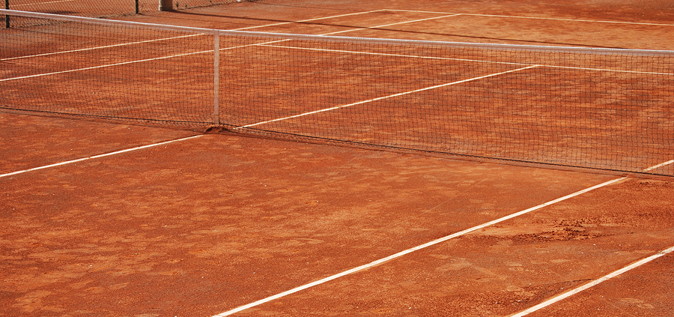
Clay courts tend to be made up of unbound mineral aggregates, so things such as crushed stone, brick or shale. There are different types of clay court, with red clay being the most popular and green clay tending to be found in the US.
Red clay courts are not actually made out of clay, but rather from crushed brick. The top-layer of the surface is typically finely crushed particles that are packed in to make it seemingly solid. The French Open is the only Grand Slam tournament that uses clay courts and the surface has been improved year-on-year to ensure good drainage.
Players that excel on clay tend to play shots with plenty of topspin, which is a shot type that doesn’t necessarily work on either of the other main surface types. Rafael Nadal is the quintessential clay court specialist, mastering the ability to slide around the place and continue running until the point is over.
Because clay courts are the slowest of the group, rallies tend to be longer and demand more from the players. The most successful players are often those that are physically fit enough to cope with the long rallies and mentally switched-on enough to keep concentrating until the point is won.
Examples of tournaments that are played on clay are as follows:
- The French Open (France)
- The Rio Open (Brazil)
- Bavarian International Tennis Championships (Germany)
- Internationaux de Strasbourg (France)
- Bucharest Open (Romania)
Hard Courts
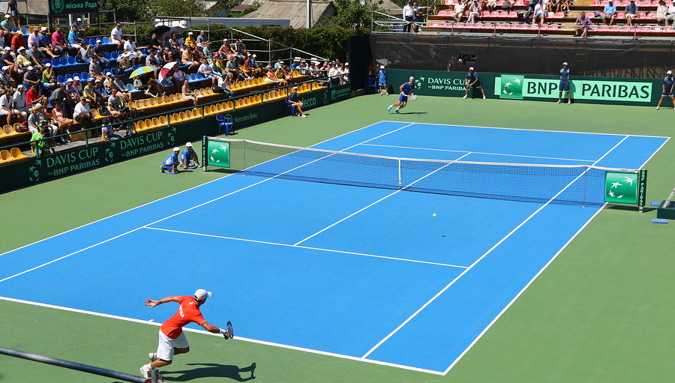
Hard courts surfaces tend to be made of either asphalt or concrete, offering a rigid base that is then covered with an acrylic surface that offers some cushioning. The colour of a hard court surface can be pretty much whatever the makers want it to be, but it is often blue.
There is little absorption by the court, meaning that the ball often bounces high and asks the player to attempt different spin types in order to win points. Flat balls are favoured when possible, with the speed of the rebound of the ball determined by how much sand has been applied to the surface.
Hard courts are one of the favourites on the professional tour and make up the majority of surfaces around the world. As such there are a number of prominent brands that create hard court surfaces, namely:
- GreenSet
- Rebound Ace
- DecoTurf
- SportMaster Sport Surfaces
- Laykold
- Plexicushion
There are too many tournaments that use hard courts to mention, but the key ones are the Grand Slams: the US Open and the Australian Open.
Grass Courts
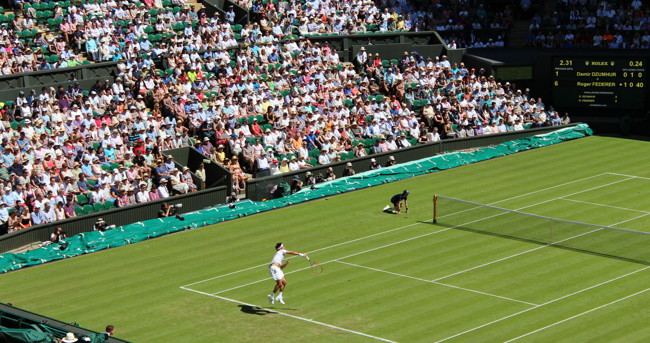
English tennis fans will always associate the sport with a grass surface because that is what the majority of courts around the country are made of. It helps that Wimbledon, the Grand Slam event based in London, is one of the most famous tennis competitions in the world and takes place on the grass.
Dew, rain and condensation can all sit on top of grass surfaces to make them extremely slippery, with the ball usually bouncing and skidding across the surface and therefore not bouncing much. Indeed, the very nature of grass surfaces means that the bounce can sometimes be bad, reacting to the surface and asking questions of the players.
Grass surfaces reward players that can get to the ball quickly and hit it with power, usually resulting in shorter rallies. That’s why serve and volley players often excel on grass, being able to get into the net quickly and end rallies before they’ve begun.
Owing to the fact that grass generally needs to be played outdoors, the season for grass court tennis is relatively short. Wimbledon is far and away the most famous of grass court tournaments, with the following being some other examples:
- Stuttgart Open (Germany)
- Nottingham Open (England)
- Queen’s Club Championships (England)
- Eastbourne International (England)
Roland Garros Show Courts
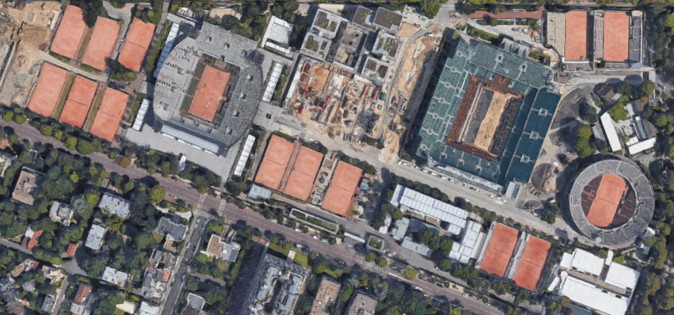
Located in the outskirt of Paris, Stade Roland Garros is the host venue for the French Open and has the capacity to welcome more than 25,000 spectators to its show courts alone. Here’s a little look at each of them:
Court Philippe-Chatrier
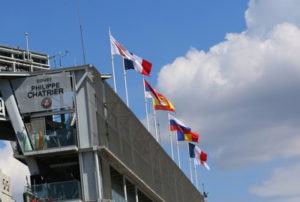 The oldest court at the venue, it was built in 1928 and intended to be the showpiece for Roland Garros. Originally known simply as ‘Court Central’, it took on its current moniker in 2001 in honour of the Fédération Française de Tennis president who had served the French Tennis Federation for 20 years and the International Tennis Federation for 14.
The oldest court at the venue, it was built in 1928 and intended to be the showpiece for Roland Garros. Originally known simply as ‘Court Central’, it took on its current moniker in 2001 in honour of the Fédération Française de Tennis president who had served the French Tennis Federation for 20 years and the International Tennis Federation for 14.
The court had the ability to host 15,166 people until the capacity was reduced in 2011 in order to welcome new press boxes. It now sits at 14,840 across les Quatre Mousquetaires, the four grandstands. They are named Lacoste, Brugnon, Cochet and Borotra after the team that won the Davis Cup six times in succession from 1927 to 1932.
Les Quatre Mousquetaires translates roughly to ‘the Four Musketeers’ and it’s after René Lacoste, Jacques Brugnon, Henri Cochet and Jean Borotra that the French Open’s trophy is also named: the Coupe des Mousquetaires. It was their 1927 success in the Davis Cup that prompted the French Tennis Federation to build the venue in the first place.
Court Suzanne Lenglen
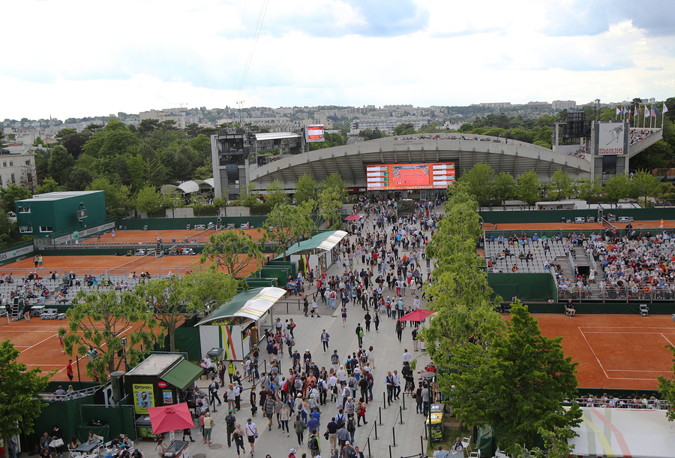
Offering space for 10,068 spectators, the secondary court at Roland Garros is named in honour of La Grand Dame of French tennis. Suzanne Lenglen is considered to be the first genuine star of women’s tennis, having won six French Opens, six Wimbledon titles and a Gold medal at the Summer Olympics on her way to earning 31 major trophies.
Italian sculptor Vito Tongiani created a bronze bas of Lenglen that stands above the tunnel entrance to the east of the stadium. As with the men’s French Open trophy being named after the Four Musketeers of tennis, so too is the women’s named in honour of La Divine. Winners of the women’s singles championship lift La Coupe Suzanne Lenglen.
There is a walkway that links the Court Chatrier to the Court Lenglen, which was given the title of Allée Marcel Bernard in 1994 in honour of the French champion of the 1940s who had died that year. There is also an irrigation system underneath the Court Lenglen, which is the first of its kind and was designed to control moisture levels on the surface.
Court 1
You’d think that there would be enough French tennis stars for the third court at Roland Garros to have a better, and less confusing, name, but alas no. Court 1 was designed by the former French junior champion Jean Lovera and is nicknamed ‘the Bullring’. That’s because its design was done to be deliberately different from the far more angular Court Philippe Chatrier, which stands adjacent.
It was built in 1980 and is beloved of those that enjoy watching tennis, principally because there is only room for 3,800 spectators so those in attendance feel close to the action. It’s also seen some glorious moments of tennis over the years, such as Gustavo Kuerten beating 5th-seed Thomas Muster when unseeded in the 3rd round back in 1997. There was also a somewhat revealing moment here when Marat Fafin dropped his pants to celebrate a point against against Félix Mantilla in 2004.
Rafa Nadal
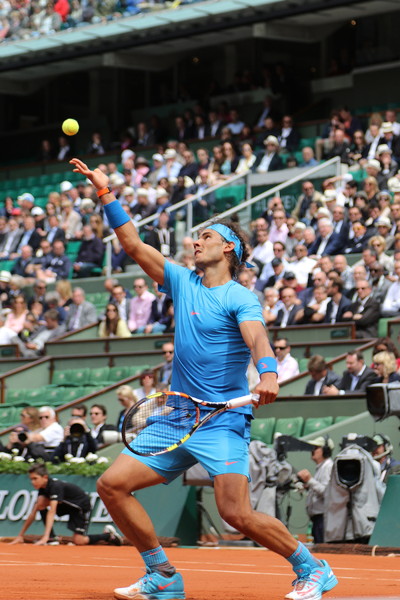 It’s almost impossible to talk about clay courts the French Open in particular without mentioning Rafa Nadal, who has won more trophies here than any other player. Born on the Balearic Island of Mallorca in the town of Manacor on the 3rd of June 1986, the Spaniard won an under-12 tournament at the age of 8, having been introduced to the sport of tennis by his uncle Toni.
It’s almost impossible to talk about clay courts the French Open in particular without mentioning Rafa Nadal, who has won more trophies here than any other player. Born on the Balearic Island of Mallorca in the town of Manacor on the 3rd of June 1986, the Spaniard won an under-12 tournament at the age of 8, having been introduced to the sport of tennis by his uncle Toni.
The victory led Toni Nadal to increase Rafael’s training, encouraging the burgeoning player to opt for a left-handed style in order to give himself a natural advantage. Rafa was also a natural footballer and could easily have followed in the the footsteps of another uncle, Miguel Ángel Nadal, who played for RCD Mallorca and FC Barcelona as well as the Spanish national side. He opted for tennis after winning Spanish and European titles and being forced by his father to chose his favoured discipline.
Before turning professional Nadal experienced his first major victory on clay when he beat former Grand Slam champion Pat Cash in an exhibition match on the surface in 2001. He turned professional in the same year at the age of just 15, going on to become just the ninth played under the age of 16 to win an ATP match when he defeated Ramón Delgado on the 29th of April 2002. The Mallorca Open, which was the tournament he got that win in, was played on clay.
He entered his first International Tennis Federation event in 2002, reaching the semifinals of the Boys’ Singles at Wimbledon. He ended 2002 with a record of 40-9 in the Futures series, going on to win 6 singles tournaments at that level, 5 of which were on clay. He won the Newcomer Of The Year award for 2003, becoming the youngest player since Boris Becker to reach the tournament’s 3rd round.
Having already made a name for himself on the tennis circuit, Nadal played world number 1 Roger Federer in 2004 at the Miami Open, being a 17-year-old who was ranked 34th, beating him in straight sets. He was one of just six players that beat the Swiss player that year. He went on to help Spain win the Davis Cup when he beat Andy Roddick, becoming the youngest player ever to not up a singles victory for the winning nation in the competition.
2005 was the year that Nadal established himself as the best player on clay when he won 24 consecutive matches, meeting the Open Era record set by Andre Agassi of consecutive wins by a male teenager. He beat Federer in the French Open semi-final and then defeated Mariano Puerta in the final to begin an era of domination by him on clay with his first Grand Slam win.
He repeated the trick the following year, winning another 24 consecutive matches and winning all four of the clay tournaments that he entered. That included the defence of his French Open title, becoming the first player to defeat Federer in the final of a Grand Slam tournament in the process. He also faced the Swiss player in the Wimbledon final, but lost in four sets. When he lost to Federer in the Masters Series Hamburg in 2007 it saw the end of an 81-match unbeaten run on clay.
With two Australian Opens, four US Opens and two Wimbledon titles to his name, Nadal has enjoyed the sort of career that most tennis players can only dream of. Yet it us unquestionably his success on clay in the French Open that has defined his career. He won 14 French Open championships between 2005 and 2022, setting a record for the competition. In 2022 he also became the record Grand Slam winner with 22 titles to his name, 64% of which are French Open titles.
Quite why he loves clay so much over any other surface is difficult to pinpoint, but the fact that he enjoys a baseline style of play and generally hits plenty of topspin strokes is certainly a part of it. He’s also famed for speedy footwork and tenacious play around the court, never accepting that a point is lost until it is. That’s not to belittle his achievements on other court types, of course, having held simultaneous Grand Slam titles on all three surfaces twice during his career.



